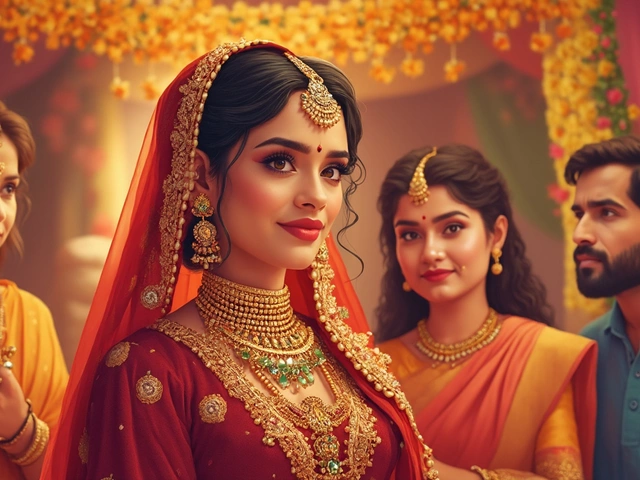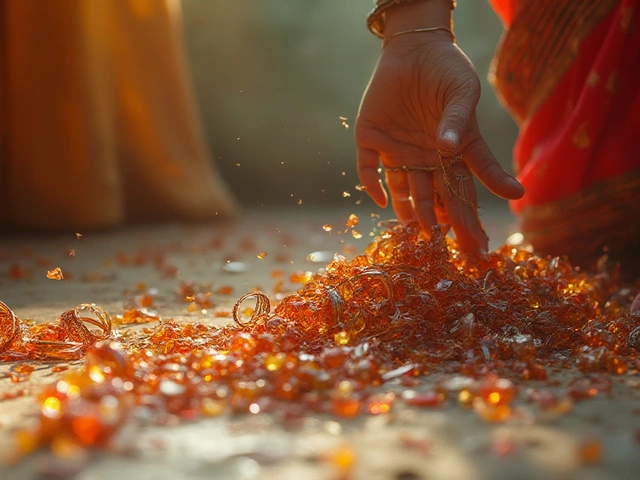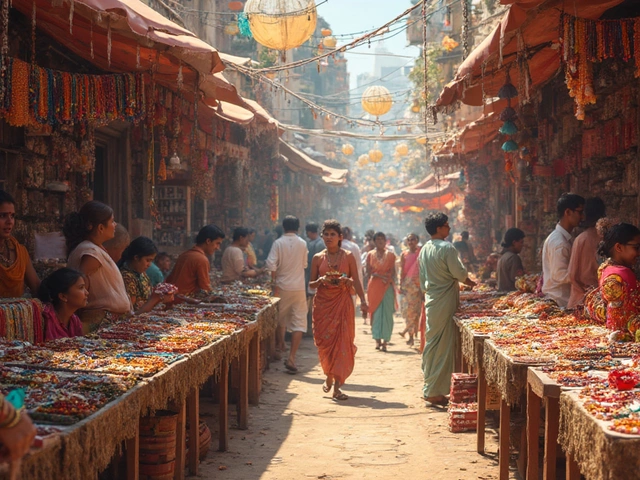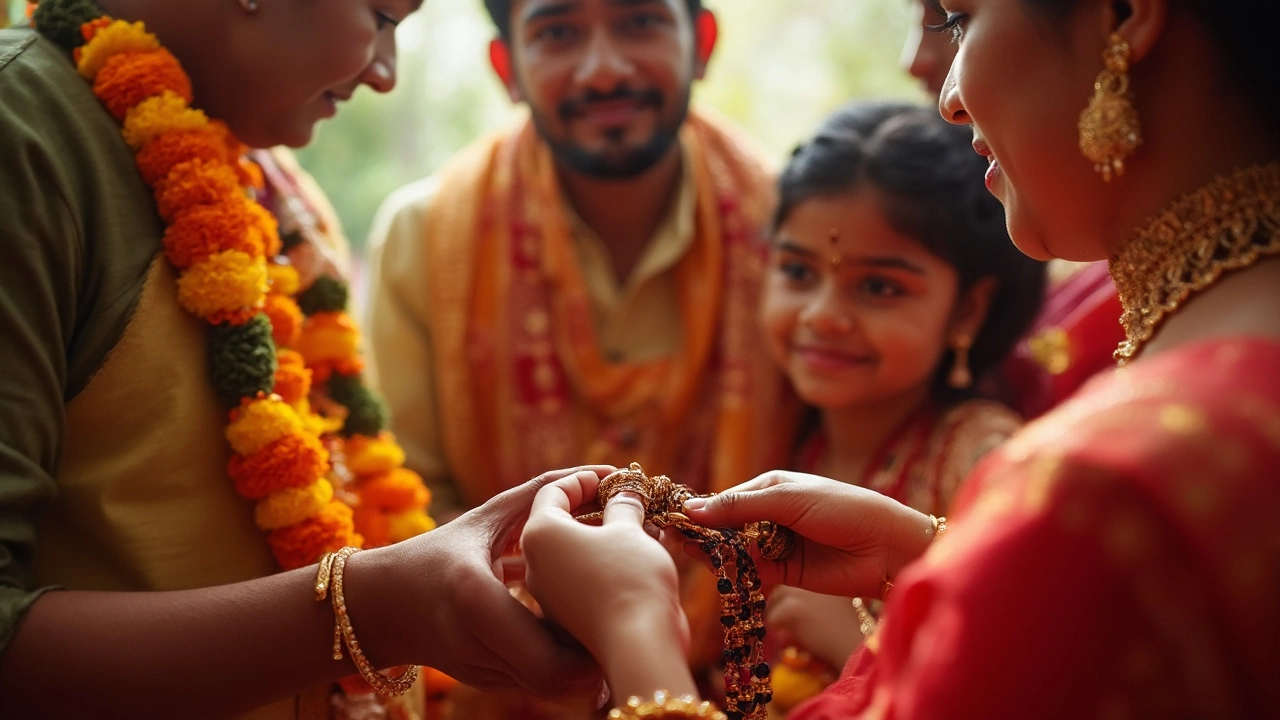
Look around at an Indian wedding, and things can get pretty grand—colorful clothes, vibrant music, families bustling with excitement. But the moment when a groom ties the mangalsutra around the bride's neck—everyone gets quiet. Eyes are glued, hearts race, and families lean closer. But behind this hush, three tiny knots are tied, each one loaded with a meaning that goes way beyond pretty jewelry. If you’ve ever wondered why these very specific three knots matter so much, you’re not alone. The truth? These knots speak volumes about marriage, identity, and forever—without saying a word.
The Heart of the Ritual: Why Three Knots, Not Just One?
Ask any couple who’s gone through a traditional Hindu wedding, and they’ll say the mangalsutra moment is when reality hits. Unlike many bits of the ceremony that are full of chanting or gifts, the three knots aren’t about show—they’re about purpose. Each knot serves as a promise, not just to the partner, but to life itself. So, why three? It traces back to ancient Hindu scriptures, which say marriage isn’t simply an agreement but a three-part union—spiritual, physical, and emotional.
The first knot, tied right after the groom says his vows, is the most significant. It means commitment to the physical relationship—an actual partnership of daily life. Here, it’s not just about romance, but about living, sharing, caring—even arguing about who gets the last samosa at dinner. The second knot, usually tied by the groom’s sister (now that’s teamwork), is for longevity of the relationship; it honors respect and deep friendship. The third knot? It seals the bond, blessing the couple with mental strength and emotional connection to brave all of life’s curveballs together.
These knots aren’t just ancient tradition—they're practiced across India, from Chennai to Chandigarh. Even among different regions and communities, most still stick to three knots. Modern couples sometimes add their own twist, maybe reciting personal vows during each knot or blending in family traditions from both sides. The emotion in that moment is powerful: you’re literally tying your destinies together, and the knots you feel under your fingers aren’t just string—they’re the heartbeat of your new life.
Don’t just take my word for it. Here’s what Dr. Priya Tandon, a respected cultural historian, says about this ceremony:
“Each knot ties not just two individuals, but two families, two lineages, and the past with the present. It’s the most profound moment of any wedding.”
And if you’re the skeptical sort, here’s a quick stat: According to a 2022 survey of Indian-married couples across five major cities, 94% said the mangalsutra ritual was more memorable than any other wedding ritual. That’s some staying power.
Breaking Down the Meaning of Each Knot
If you ever sit next to an Indian grandmother at a wedding, you’ll probably get an earful about each knot’s meaning. But what do the three knots actually mean, and why do they matter today—when so much else in weddings changes?
The first knot is bold—it’s tied by the groom and stands for the physical union of the couple. This isn’t just about sharing a bed (though sure, that’s part of it), but about building a home, raising kids, even tackling bills together. This knot is for the partnership that has to last on both easy and tough days. Let’s face it, building a life from the ground up takes more than love songs—it takes daily action, and this first knot says, 'I’ve got your back.'
The second knot isn’t just a gesture—it’s community in action. The groom’s sister, or a close family member, steps in and ties it alongside the groom. Why? It’s a reminder that marriage comes with a whole new circle of support—extended families, friendships, elders who will guide, scold, and support the couple. This knot is the glue that keeps everyone involved. Like when your in-laws call just to say hi, or when you get dragged into family WhatsApp groups—annoying at times, but you know you’re part of something bigger.
The third knot is the most subtle, but maybe the most essential: the blessing for mental and emotional strength. Every marriage faces ups and downs—job loss, sickness, misunderstandings, weird habits you never saw coming. With this knot, the hope is that the couple will handle every twist with patience, humor, and kindness. In short, it’s about making the marriage unbreakable—not by force, but by understanding.
As small as these knots are, they represent values that can help couples weather storms long after the music dies down. And if you want your own wedding to carry some extra meaning, try whispering a meaningful promise to your partner with each knot. Or write your intentions down and keep them somewhere special. That’s one way to turn tradition into something deeply personal.
Here’s a look at how the meanings break down in a table for quick reference:
| Knot | Tied By | Main Meaning | Modern Tip |
|---|---|---|---|
| First Knot | Groom | Physical partnership and home building | Make a promise for how you'll face daily life together |
| Second Knot | Groom's Sister or Relative | Family respect and social bond | Welcome your new family with a gesture or a shared moment |
| Third Knot | Groom | Emotional and spiritual unity | Share a laugh or quiet words with your partner |
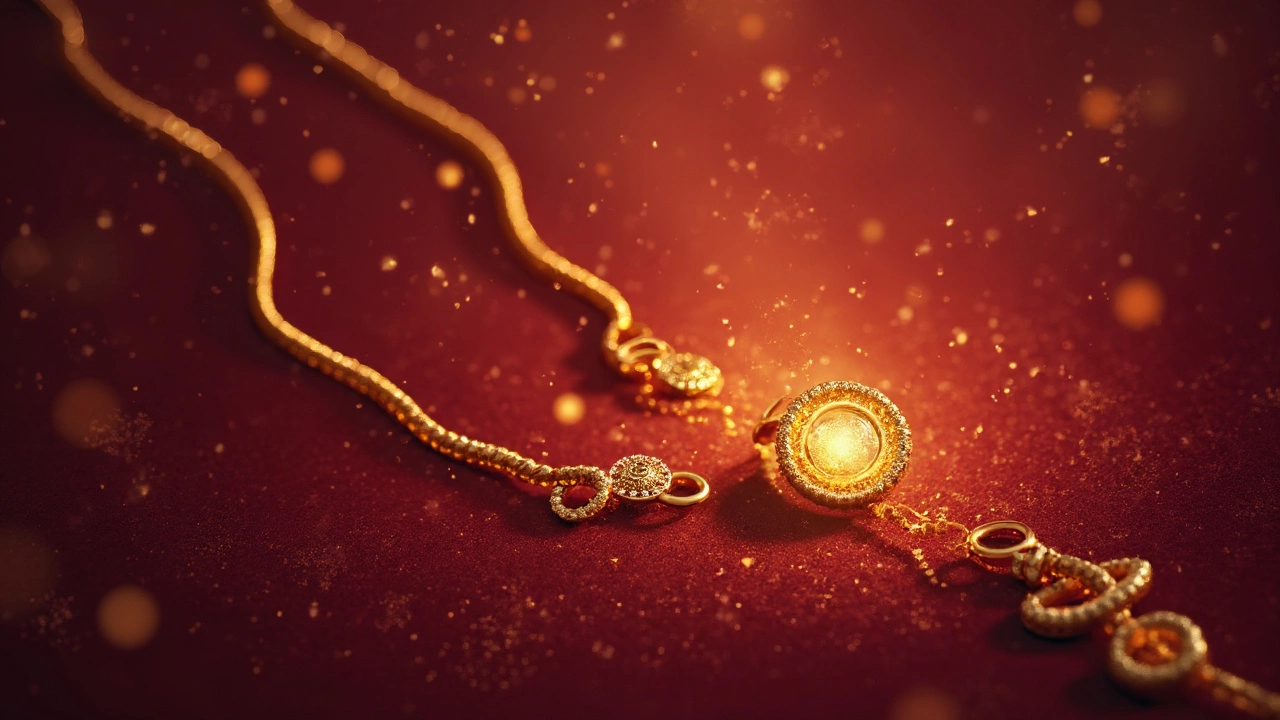
Traditions and Variations Across India
Think all Indian weddings are the same? Think again. Tying three knots might be the rule, but the way it’s done changes a lot depending on where you live—or where your grandparents are from. In South India, especially Tamil and Telugu communities, the three knot system is set in stone. The mangalsutra usually has bright yellow thread and gold beads, with big ceremonies around every knot. Brides often tuck the mangalsutra into their blouse right after, keeping it close to their hearts, literally and symbolically.
Travel west to Maharashtra or Gujarat and you’ll see the mangalsutra going from classic yellow thread to black beaded chains—some even with diamond pendants. Here, the knots matter, but so does how the beads face, whether the pendant is round or flat, even the style of gold clasp. In Northern India, you might find customs where the knots are tied but accompanied by different prayers or family blessings. The style might get modern, but the symbolism? Still just as powerful.
There’s also a bit of “east meets west” flair happening these days. Millennials and Gen Z couples choose their favorite designs: rose gold, dainty chains, or even custom inscriptions. Some couples opt for elaborate ceremonies around each knot—adding vows, music, or a meaningful story shared with guests. It’s common now for the bride to tie a knot back on the groom’s wrist as a promise of her own.
Not everyone does things the old-school way, and honestly, that’s not a bad thing. Blending traditions makes them fresh—a beautiful reminder that no matter how different families are, the intention stays the same: love, loyalty, a bit of fun, and lots of support. As long as you understand the meaning, the rituals can evolve while the commitment stays firm.
Want your own celebration to have nods to tradition and personality? Here are a few tips:
- Ask elders for their mangalsutra stories—and include those tales in your own ceremony.
- Exchange your own vows during each knot to make the moment truly yours.
- If you’re blending cultures, mix in elements from both sides—maybe a favorite song or family blessing as each knot is tied.
- Take a photo at each knot—those shots will remind you how it all began when you hit your silver anniversary.
- Have a quiet moment with just you and your partner before or after the ritual; soak it in, because life will get loud again quickly.
This blend of old and new is what keeps the ritual alive—so don’t stress about getting every detail “right.” Meaning matters most.
Why the Three Knots Still Matter Today
Plenty of folks might roll their eyes and call these things “just tradition.” Yet, there’s a reason most Indian couples still pay so much attention to the mangalsutra knots—they actually work as a powerful anchor. When the wedding glitter fades and you’re back to arguing over the TV remote or trying to budget for a vacation, remembering those three knots can be grounding.
The physical, family, and emotional promises aren’t just poetic fluff. According to a long-term study done by the Indian Association of Marriage and Family Therapy in 2023, couples who talked about their mangalsutra vows and rituals during tough times were 33% more likely to resolve conflicts peacefully. It’s not magic, but having a ritual that covers all aspects of life—body, family, mind—gives you a way to reset when things get rough.
Western couples have wedding rings, European couples save pieces of cake… Indian couples have a string of three simple knots that seem to“grow” in meaning over decades. Suddenly, you remember your parents’ fraying mangalsutra, your aunt’s stories of how hers got her through hard days, or your grandparents who still touch theirs every morning after fifty years. Those knots become more than just symbols—they turn into invisible safety nets that catch people when life shakes them up.
Want to make the most of these knots even long after your wedding? Try these ideas:
- On your anniversary, talk with your partner about each knot’s meaning—what’s changed, what’s stayed strong?
- When you have a tough moment, remember what each knot stood for and ask, ‘Are we living those promises?’
- If you’re raising kids, share what you know about the mangalsutra—kids remember stories more than orders.
- Keep your mangalsutra visible, not tucked away—let it be a gentle daily reminder of your bond.
So yeah, the three knots of the mangalsutra aren’t just a wedding ritual—they’re life advice dressed up as tradition. And in a world where everything changes quickly, maybe these simple, sturdy knots are exactly what we need to hold onto what matters most.
